Abstract
A trial is reported of the effects of giving clofibrate to prevent progression of pre-existing ischaemic heart disease. There were two groups randomly distributed between clofibrate (350 patients) and placebo (367 patients) regimens. The trial lasted about six years and was conducted in 19 hospitals in Scotland. The criteria of acceptance into the trial were precise and were monitored by one observer. The standards of diagnosis of events were defined and all protocols and electrocardiograms were read blind by one observer.
Three categories of patients were admissible to the trial: (1) patients with one myocardial infarction (W.H.O. E.C.G. criteria) between 8 and 16 weeks before the start of the trial; (2) patients with angina of a duration of 3 to 24 months, provided their E.C.G. showed signs of myocardial ischaemia at rest or after exercise; and (3) patients with one recent myocardial infarction and pre-existing angina as defined above.
There were fewer deaths in patients with angina (categories 2 and 3 above) treated with clofibrate than in those on placebo. The mortality in the former group was reduced by 62%, and this is a statistically significant difference. Clofibrate did not have any statistically significant effect in reducing the rate of non-fatal infarction in patients with angina or in those with myocardial infarction and pre-existing angina, though a beneficial trend was evident when both subgroups were combined (a 44% reduction compared with the placebo group). There was a significant reduction in all events (fatal and non-fatal) in patients with angina (“all anginas”) in the clofibrate-treated group; the rate was reduced by 53%.
Clofibrate did not alter the overall mortality or morbidity rates in patients admitted to the trial with recent myocardial infarction without preceding angina of more than three months' duration. In one subgroup there was a statistically significant adverse effect in the clofibrate-treated group. The lack of any overall effect in patients with myocardial infarction might be related to the unexpectedly low mortality rate (2·97%) in the placebo group; it is usually in the region of 4-9% per annum after first myocardial infarction.
In patients categorized as “all anginas” there was significant reduction in events whether the initial serum cholesterol level was high (greater than 260 mg/100 ml) or normal. Clofibrate seemed to have a small but not significant beneficial effect in patients with myocardial infarction with initially high serum cholesterol levels, but was of no value in those with initially normal serum cholesterol levels. There was no significant relationship between the response or lack of response of serum cholesterol to clofibrate and the incidence of events either in patients with angina or in those with infarction.
The main conclusion of this trial is that clofibrate had a beneficial effect in reducing mortality and, to a lesser extent, morbidity in patients who presented with angina (“all anginas”). This effect was independent of initial serum cholesterol levels or the extent to which serum cholesterol was lowered. The drug had no significant overall effect on prognosis in patients with myocardial infarction alone.
Full text
PDF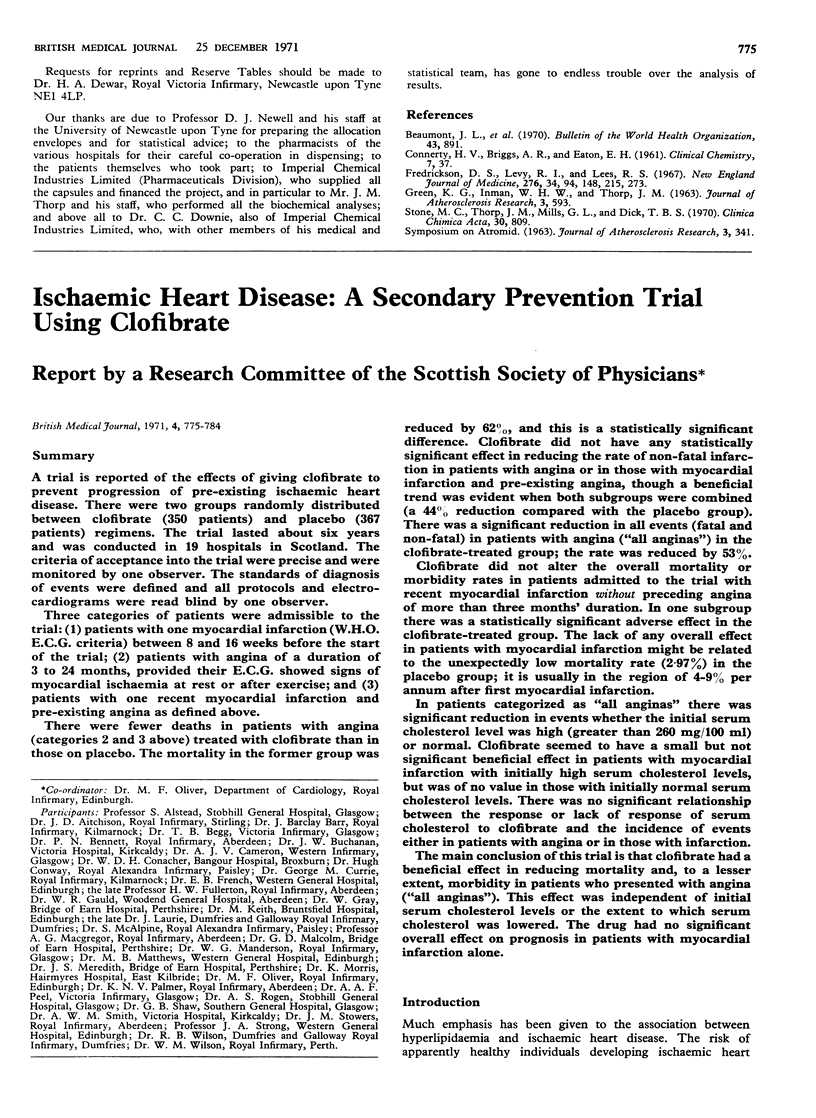
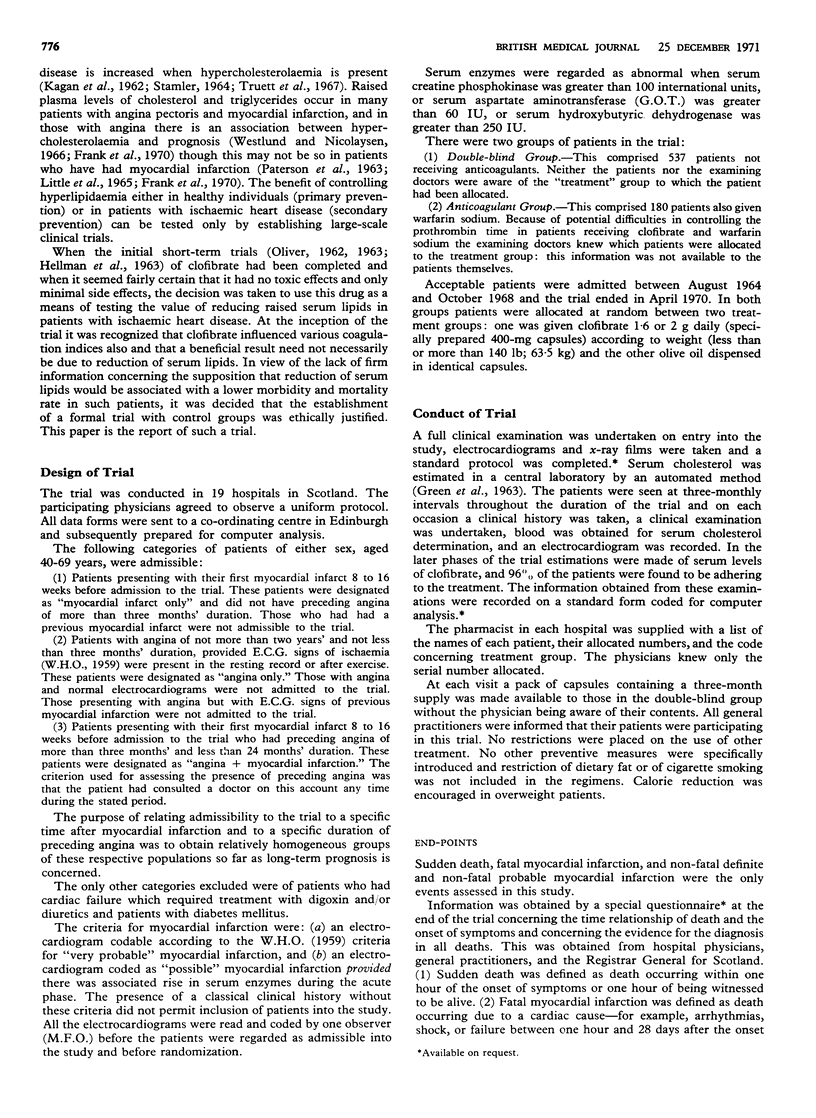
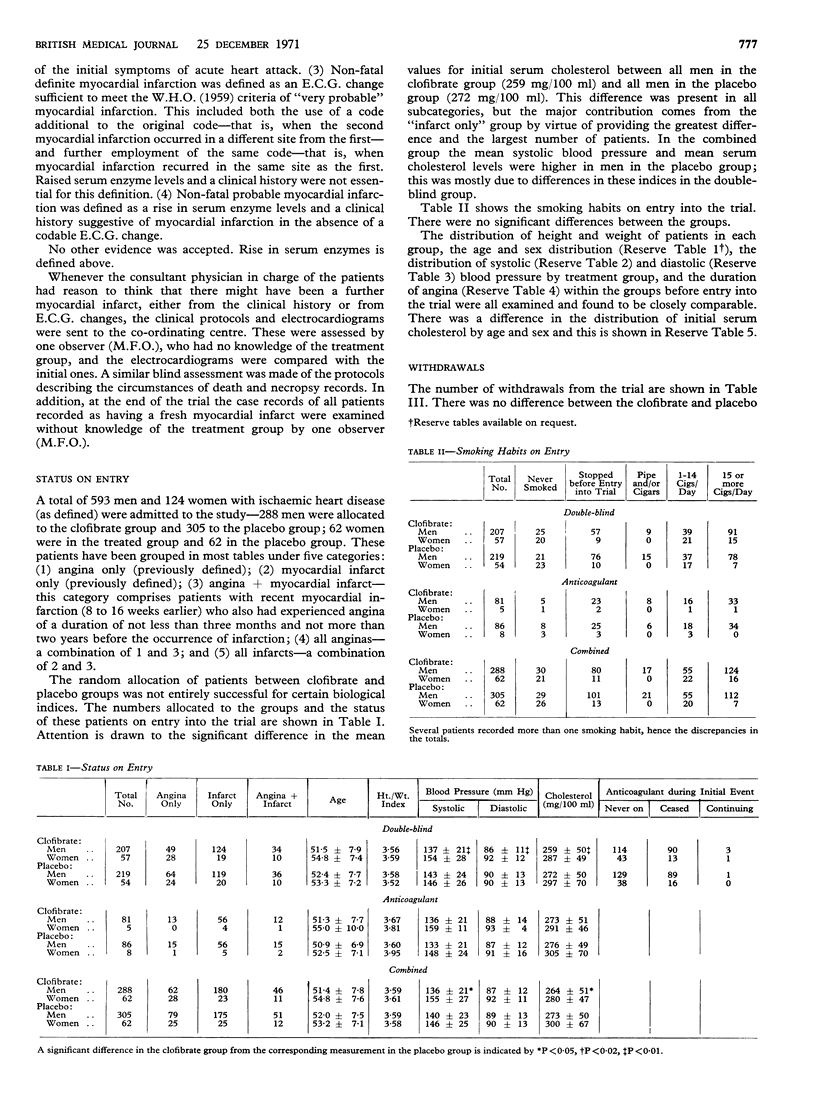
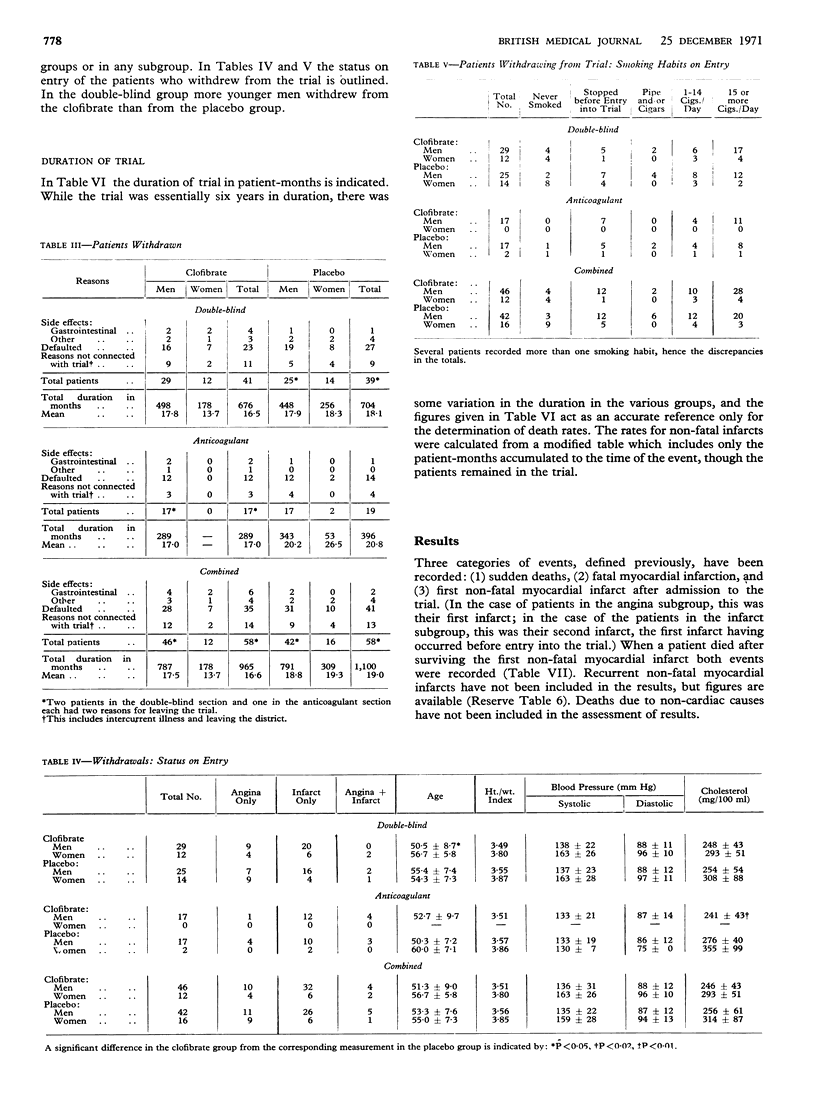
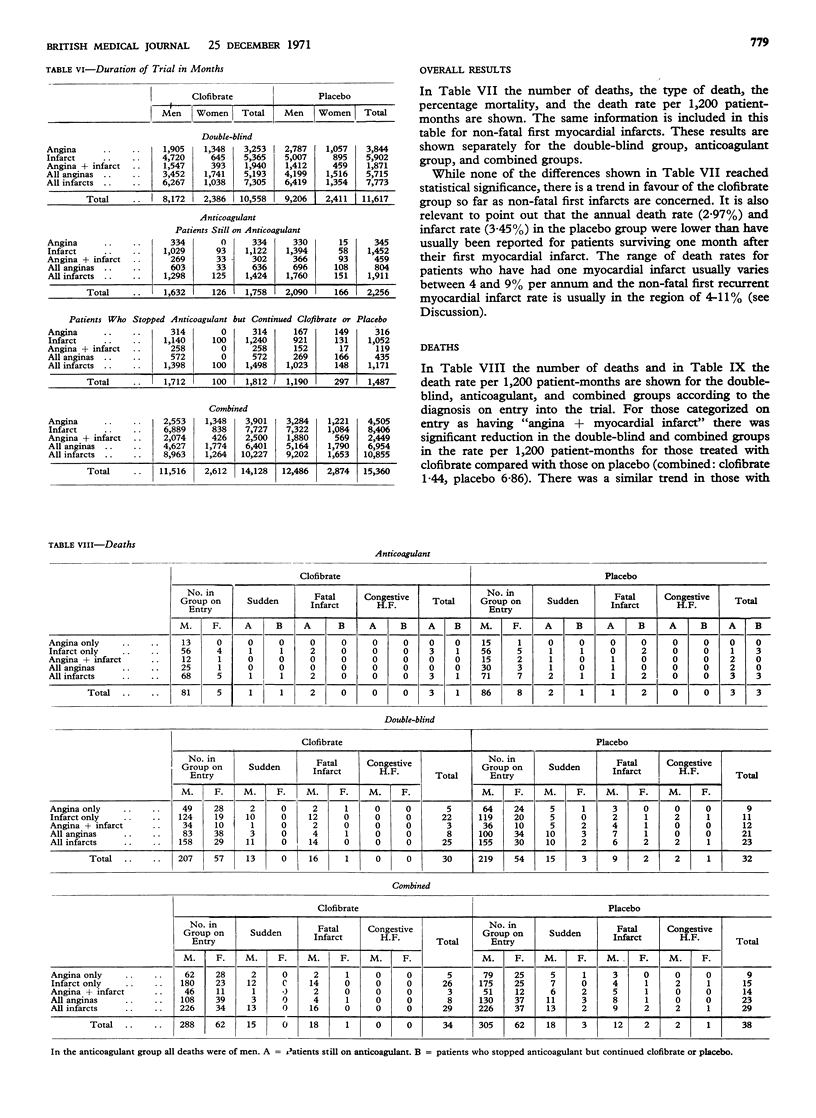
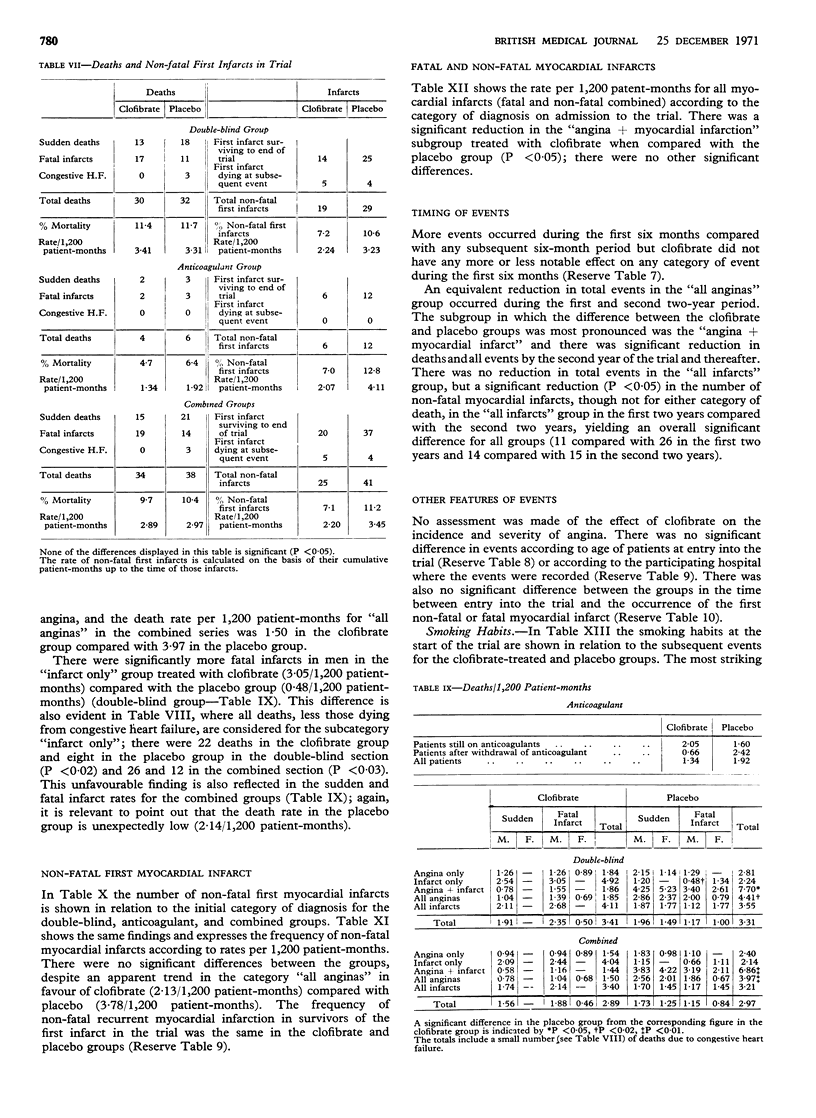
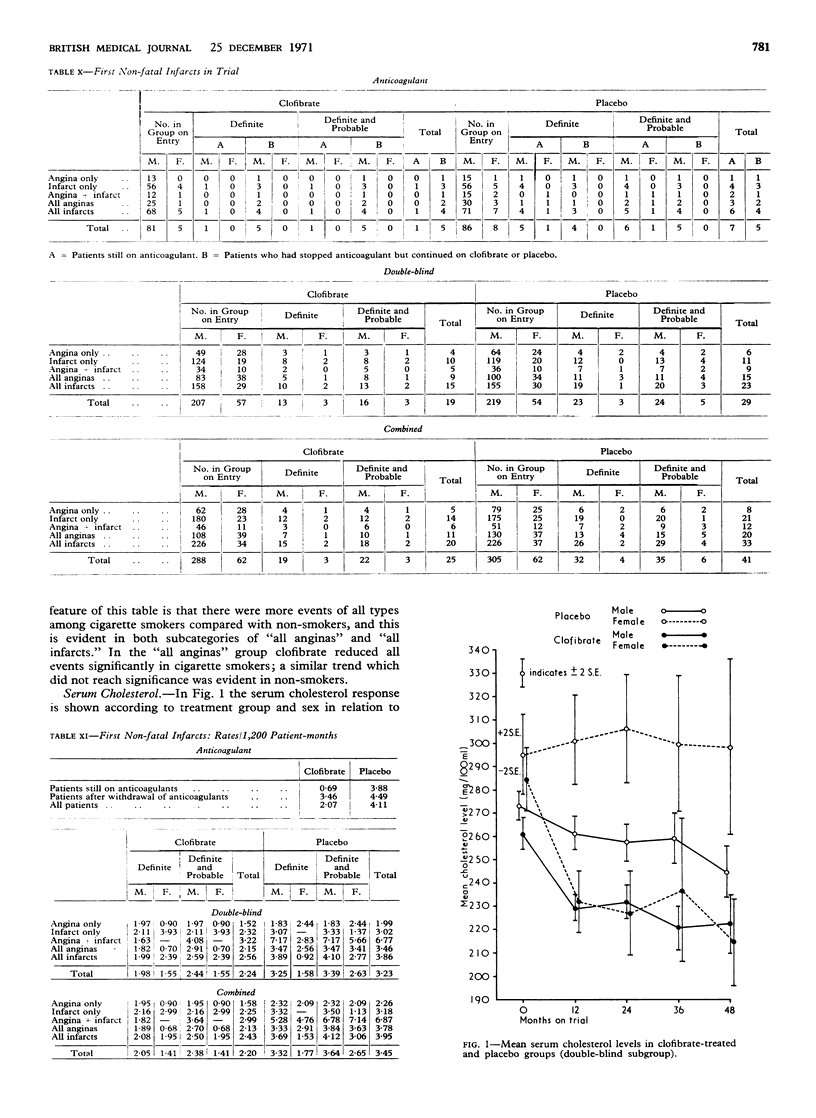
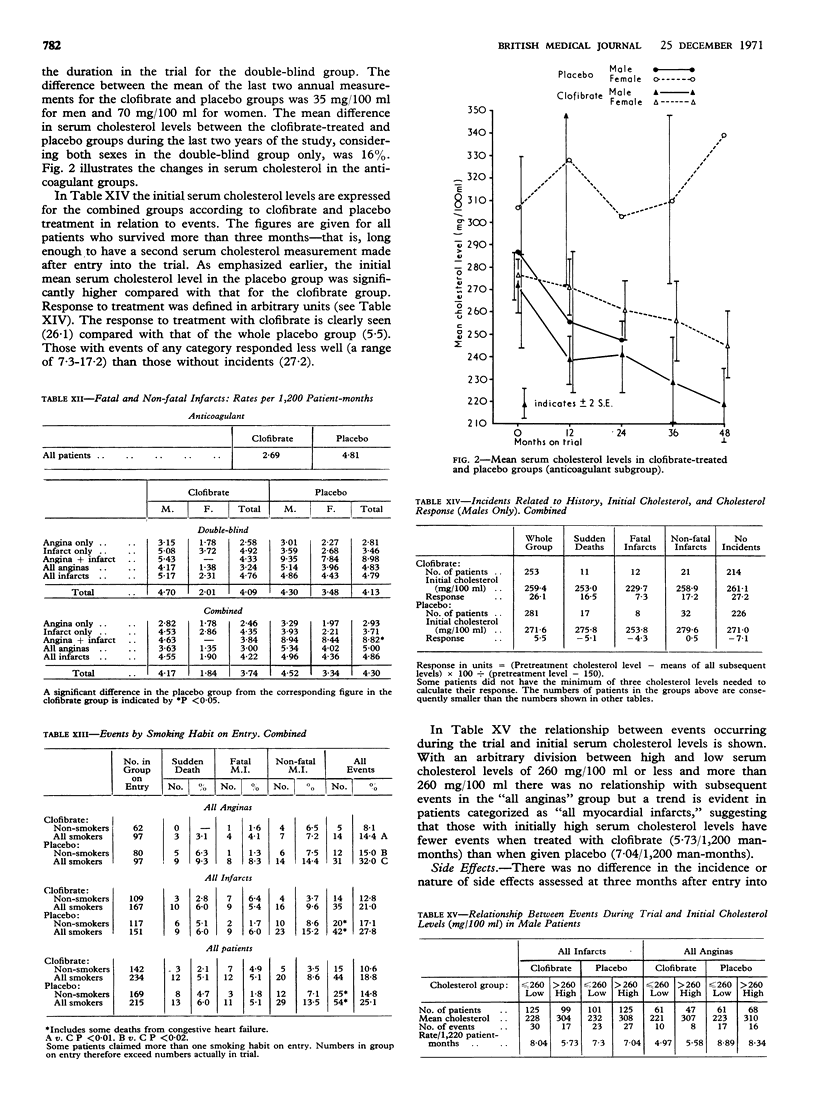
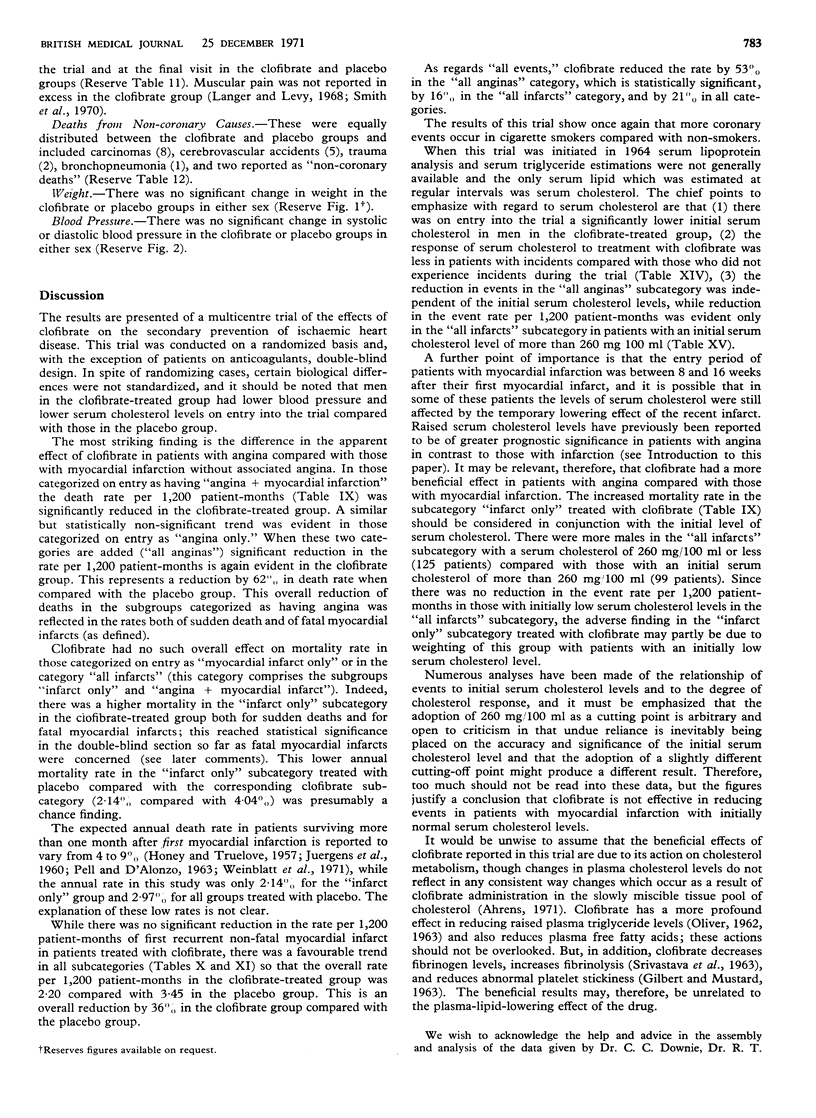
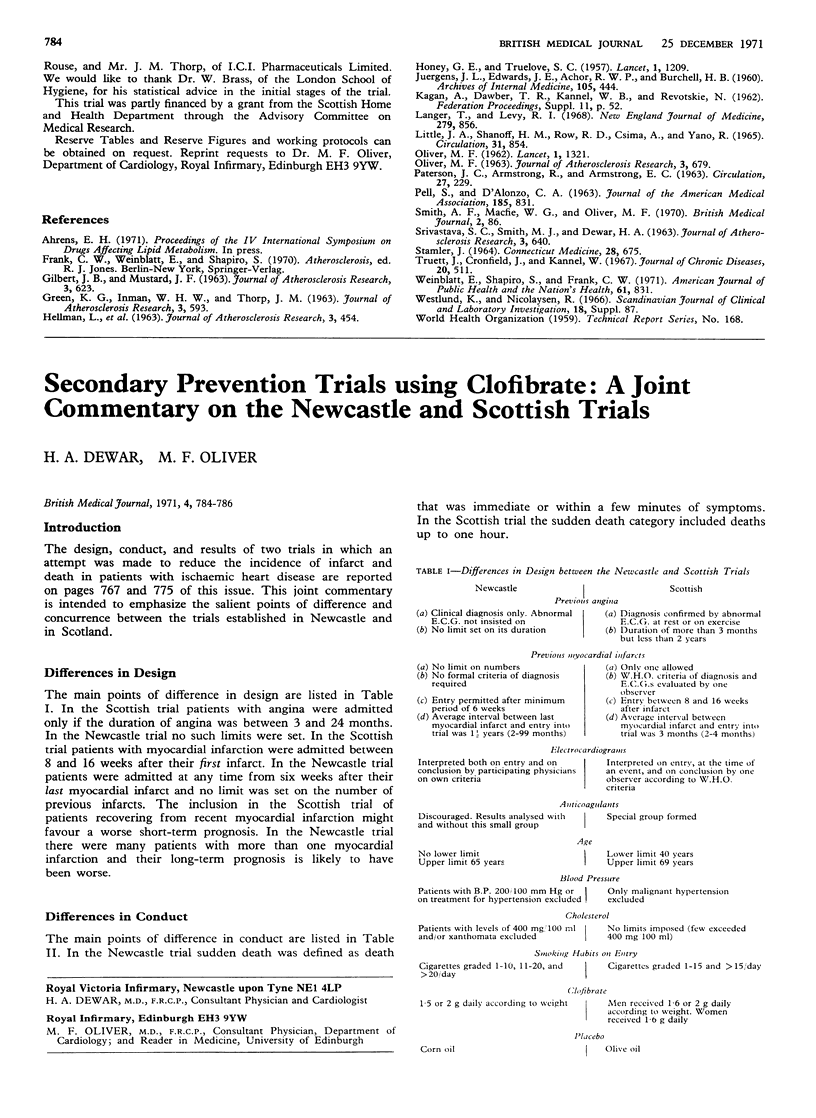
Selected References
These references are in PubMed. This may not be the complete list of references from this article.
- GILBERT J. B., MUSTARD J. F. SOME EFFECTS OF ATROMID ON PLATELET ECONOMY AND BLOOD COAGULATION IN MAN. J Atheroscler Res. 1963 Sep-Dec;3:623–633. doi: 10.1016/s0368-1319(63)80045-9. [DOI] [PubMed] [Google Scholar]
- GREEN K. G., INMAN W. H., THORP J. M. MULTICENTRE TRIAL IN THE UNITED KINGDOM AND IRELAND OF A MIXTURE OF ETHYL CHLOROPHENOXYISOBUTYRATE AND ANDROSTERONE (ATROMID). A PRELIMINARY REPORT. J Atheroscler Res. 1963 Sep-Dec;3:593–616. doi: 10.1016/s0368-1319(63)80043-5. [DOI] [PubMed] [Google Scholar]
- HELLMAN L., ZUMOFF B., KESSLER G., KARA E., RUBIN I. L., ROSENFELD R. S. REDUCTION OF SERUM CHOLESTEROL AND LIPIDS BY ETHYL CHLOROPHENOXYISOBUTYRATE. J Atheroscler Res. 1963 Sep-Dec;3:454–466. doi: 10.1016/s0368-1319(63)80025-3. [DOI] [PubMed] [Google Scholar]
- HONEY G. E., TRUELOVE S. C. Prognostic factors in myocardial infarction. Lancet. 1957 Jun 15;272(6981):1209–1212. doi: 10.1016/s0140-6736(57)91787-7. [DOI] [PubMed] [Google Scholar]
- JUERGENS J. L., EDWARDS J. E., ACHOR R. W., BURCHELL H. B. Prognosis of patients surviving first clinically diagnosed myocardial infarction. Arch Intern Med. 1960 Mar;105:444–450. doi: 10.1001/archinte.1960.00270150098010. [DOI] [PubMed] [Google Scholar]
- LITTLE J. A., SHANOFF H. M., ROE R. D., CSIMA A., YANO R. STUDIES OF MALE SURVIVORS OF MYOCARDIAL INFARCTION. IV. SERUM LIPIDS AND FIVE-YEAR SURVIVAL. Circulation. 1965 Jun;31:854–862. doi: 10.1161/01.cir.31.6.854. [DOI] [PubMed] [Google Scholar]
- Langer T., Levy R. I. Acute muscular syndrome associated with administration of clofibrate. N Engl J Med. 1968 Oct 17;279(16):856–858. doi: 10.1056/NEJM196810172791604. [DOI] [PubMed] [Google Scholar]
- OLIVER M. F. Reduction of serum-lipid and uric-acid levels by an orally active androsterone. Lancet. 1962 Jun 23;1(7243):1321–1323. doi: 10.1016/s0140-6736(62)92422-4. [DOI] [PubMed] [Google Scholar]
- PATERSON J. C., ARMSTRONG R., ARMSTRONG E. C. SERUM LIPID LEVELS AND THE SEVERITY OF CORONARY AND CEREBRAL ATHEROSCLEROSIS IN ADEQUATELY NOURISHED MEN, 60 TO 69 YEARS OF AGE. Circulation. 1963 Feb;27:229–236. doi: 10.1161/01.cir.27.2.229. [DOI] [PubMed] [Google Scholar]
- PELL S., D'ALONZO C. A. ACUTE MYOCARDIAL INFARCTION IN A LARGE INDUSTRIAL POPULATION: REPORT OF A 6-YEAR STUDY OF 1,356 CASES. JAMA. 1963 Sep 14;185:831–838. doi: 10.1001/jama.1963.03060110035014. [DOI] [PubMed] [Google Scholar]
- SRIVASTAVA S. C., SMITH M. J., DEWAR H. A. THE EFFECT OF ATROMID ON FIBRINOLYTIC ACTIVITY OF PATIENTS WITH ISCHAEMIC HEART DISEASE AND HYPERCHOLESTEROLAEMIA. J Atheroscler Res. 1963 Sep-Dec;3:640–647. doi: 10.1016/s0368-1319(63)80047-2. [DOI] [PubMed] [Google Scholar]
- STAMLER J. ATHEROSCLEROTIC CORONARY HEART DISEASE. THE MAJOR CHALLENGE TO CONTEMPORARY PUBLIC HEALTH AND PREVENTIVE MEDICINE. Conn Med. 1964 Sep;28:675–692. [PubMed] [Google Scholar]
- Truett J., Cornfield J., Kannel W. A multivariate analysis of the risk of coronary heart disease in Framingham. J Chronic Dis. 1967 Jul;20(7):511–524. doi: 10.1016/0021-9681(67)90082-3. [DOI] [PubMed] [Google Scholar]
- Weinblatt E., Shapiro S., Frank C. W. Changes in personal characteristics of men, over five years, following first diagnosis of coronary heart disease. Am J Public Health. 1971 Apr;61(4):831–842. doi: 10.2105/ajph.61.4.831. [DOI] [PMC free article] [PubMed] [Google Scholar]


